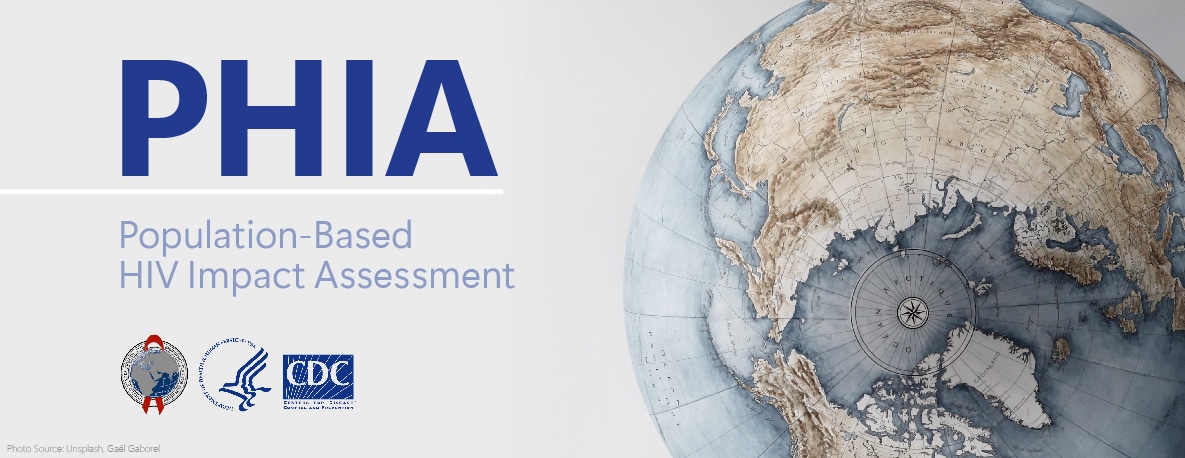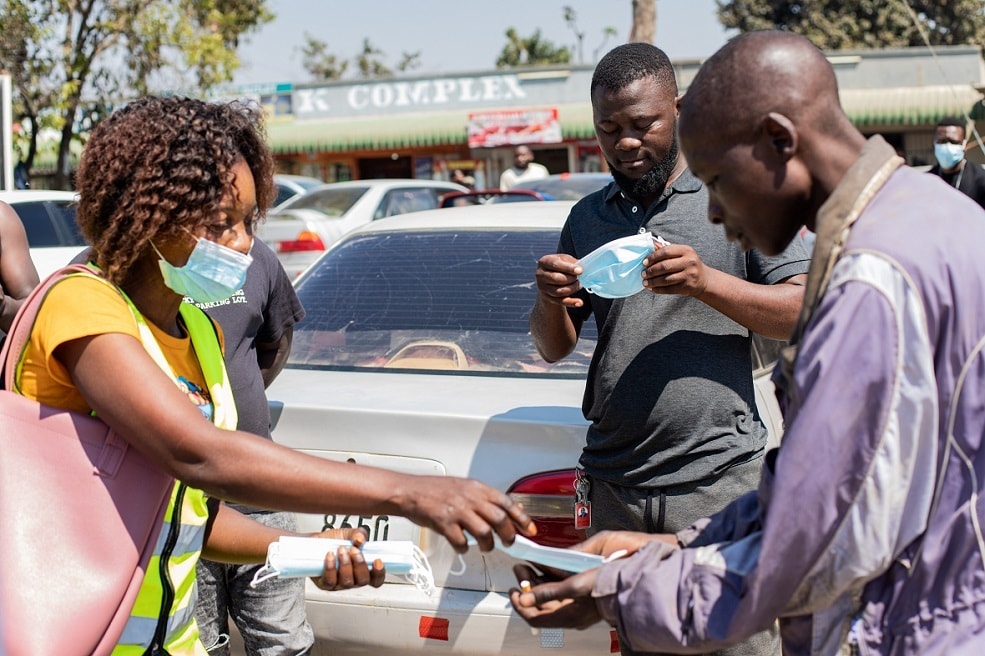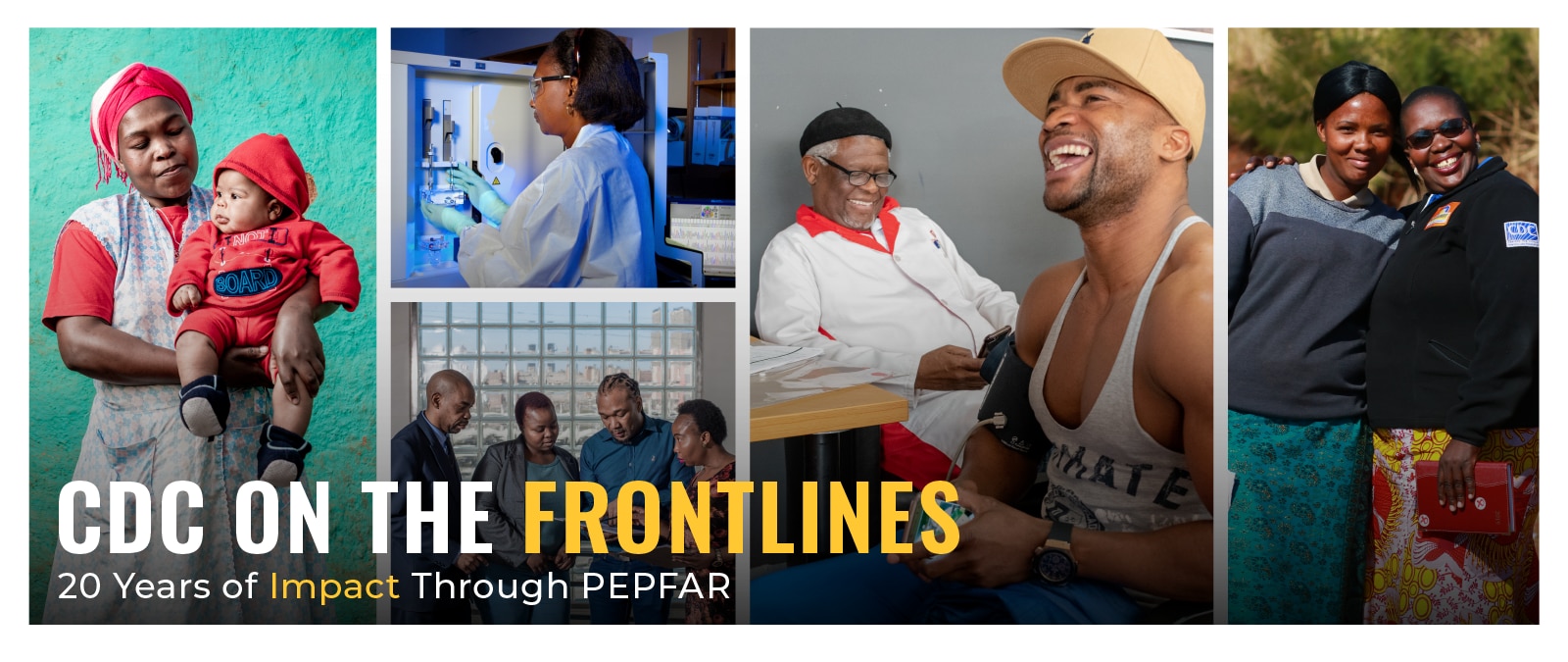Zambia Country Profile

Country Overview
Discover more about CDC’s work in Zambia by viewing our detailed country profile
Country Overview
CDC established an office in Zambia in 2000 and works with various government ministries and provincial health offices to sustain a robust national HIV response. CDC’s areas of focus in its partnership with Zambia includes HIV prevention and treatment; integration of HIV and tuberculosis management; public health workforce capacity strengthening; and broader health systems strengthening including disease surveillance, laboratory, and health information systems as well as development of a National Public Health Institute.
Country Quick Facts
Per Capita GNI
$1,170
(2022)
Population (million)
20.01
(2022)
Under 5 Mortality
57.7/1,000 Live Births
(2021)
Life Expectancy
61.2 Years
(2021)
Estimated HIV Prevalence
10.8%
(Ages 15-49): (2022)
Estimated AIDS Deaths
17,000
(Age≥15) (2022)
TB Treatment Success Rate
91%
(2020)
Estimated TB Incidence
307/100,000
(2021)
Estimated Orphans Due to AIDS
580,000
(2022)
TB patients with known HIV-status who are HIV-positive
34%
(2021)
Reported Number Receiving Antiretroviral Therapy (ART)
1,224,357
(Age≥15) (2022)
Strategic Focus
The Centers for Disease Control and Prevention (CDC) office in Zambia was launched in December 2000 and has worked closely with Zambian Central Government and provincial health offices to build a robust national HIV/AIDS response. CDC, as a key PEPFAR implementing agency, has worked in a step-wise fashion to build the additional capacity and infrastructure necessary for a sustainable, high impact HIV response in Zambia.
Areas of strategic focus include:
• HIV prevention and treatment;
• Integration of HIV and tuberculosis (TB) management;
• Public health workforce capacity strengthening through a Field Epidemiology Training Program (FETP);
• National Public Health Institute development and support; and
• Health systems strengthening: surveillance, laboratory, and health information systems.
Key Activities and Accomplishments
Voluntary Medical Male Circumcision – As reflected in PEPFAR data, there has been tremendous progress in uptake from 84,604 circumcised in 2011 to a cumulative total of 1,762,461 by Dec 2017. CDC has contributed over 720,000 (41%) towards these results.
HIV Treatment Program – With a projected estimate of 1.2 million people living with HIV, CDC and other PEPFAR agencies are focused on getting Zambia to achieve 90% treatment coverage among PLHIV by the end of FY19.
Prevention of Mother-to-Child Transmission (PMTCT) – PMTCT services continue to be supported at 804 Zambia public health facilities, with all of these sites providing antiretroviral therapy for all HIV-infected pregnant women.
Lusaka Surge Campaign – A new strategy towards the attainment of epidemic control in Lusaka Urban District (the district with the highest burden of HIV in Zambia, HIV prevalence of 16.1% per ZAMPHIA 2016) was launched on Dec. 1, 2017. The goal of the surge is to accelerate HIV treatment services in Lusaka and achieve the UNAIDS HIV epidemic control targets by FY19.
Electronic Health Record (EHR) – SmartCare is the national Electronic Health Record (EHR) system which supports clinical care and continuity of care by providing confidential portable health records to clients, on a Smart Card. Approximately 2.2 million persons are enrolled in the system at over 900 facilities, of which 74 have gone paperless (using the EHR at all service delivery points) while 226 high volume facilities are earmarked to go paperless in 2018. CDC with PEPFAR funding, has supported this work.
Improving Public Health Surveillance– CDC is supporting the Ministry of Health (MOH) in key, long-term, sustainable efforts through the Zambia National Public Health Institute (ZNPHI), and also through the Field Epidemiology and Training Program (FETP), strengthening MOH staff capacity to detect and respond in a timely and effective manner to health threats and outbreaks.
Zambia Population HIV Impact Assessment (ZAMPHIA) – First population-based survey in Zambia to measure national HIV incidence, pediatric and adult HIV prevalence and viral load suppression. ZAMPHIA showed that 70.8% of PLHIV ages 15 – 59 know their status; of those 86.9% are active on ART with a viral load suppression rate of 92.2%. Declining incidence depicts strides towards epidemic control; however large treatment gaps and lower viral load suppression remains especially among youth and males 25 and older.
Zambia Assessment of TB and HIV in the Mines (ZATHIM) – CDC supported the Tropical Diseases Research Centre (TDRC) to carry out an assessment to better understand knowledge, attitudes and practices of mineworkers, ex-mineworkers and health care workers related to accessing and providing TB and HIV services. Findings from over 2500 current and ex-mineworkers and facilities in mining areas has been disseminated to key stakeholders and is being used to plan program activities to improve care for these populations.
Zambia Related Stories

Tracking PEPFAR Impact Toward Global Targets
The U.S. Centers for Disease Control and Prevention (CDC) works with partners including host countries, local implementing partners, faith-based organizations, and other community-based organizations to measure progress towards HIV epidemic control in countries supported by the U.S. President’s Emergency Plan for AIDS Relief (PEPFAR).

PEPFAR Platform Accelerates COVID-19 Vaccination Uptake in Zambia
Zambia Ministry of Health, with support from the President’s Emergency Plan for AIDS Relief (PEPFAR) and the U.S. Centers for Disease Control and Prevention (CDC), integrated COVID-19 vaccination into HIV treatment centers to accelerate vaccine delivery as part of a national awareness campaign launched on World AIDS Day in December 2021.

CDC On the Frontlines
Over the past 20 years, the U.S. President’s Emergency Plan for AIDS Relief (PEPFAR) has saved millions of lives as a leader in the global response to two of the world’s deadliest infectious diseases – HIV and TB. As a key implementing agency of the U.S. President’s Emergency Plan for AIDS Relief (PEPFAR), CDC is at the forefront of these global efforts to treat and prevent these diseases.